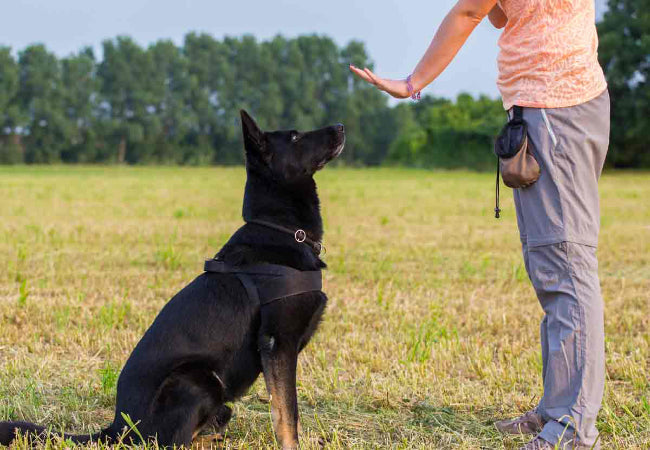Should I Use a Cue for Everything? Vet Guide to When Less Is More in Dog Training✨

In this article
Should I Use a Cue for Everything? Vet Guide to When Less Is More in Dog Training✨
By Dr. Duncan Houston BVSc
If your dog only listens when you’re speaking, it might be a sign you’re cueing too much. I’m Dr. Duncan Houston. In this article, I’ll explain when to use cues—and when to step back and let the behavior develop naturally for better results and calmer communication.
🧠 What Is a Cue in Dog Training?
A cue is a signal (usually a word or gesture) that tells your dog what behavior to perform. Cues are essential—but not every behavior needs one.
Why? Because cues should come *after* the dog has learned the behavior—not before they understand what to do.
🚨 The Problem With OverCueing
- 🗣️ Too many cues can confuse your dog or reduce reliability
- 📉 Your dog might become dependent on verbal direction and stop thinking independently
- ⚠️ You may accidentally cue during the *wrong* behavior (reinforcing the opposite of what you want)
Example: Saying “calm down!” repeatedly doesn’t teach calm—it teaches that “calm down” = excited energy and attention.
✅ When NOT to Use a Cue
1. During New Behavior Shaping
- 🐾 Wait for the behavior (e.g., sit or lie down)
- 🔁 Mark it (“yes” or click), then reward
- 🗣️ Add the verbal cue *only once* the dog consistently offers the behavior
2. For Calming or “Default” Behaviors
- 🧘 Reward natural lying down, disengaging from distraction, or choosing to go to their bed
- 🧠 Avoid interfering with calmness by adding verbal noise
3. When Using Environmental Cues
- 🚪 Example: Sitting before going outside = no cue needed. The closed door becomes the signal to wait.
- 🍽️ Your presence with the food bowl becomes the cue for calm behavior—not your voice.
✅ When to Use Cues (Intentionally)
- 🎯 When you want to ask for a specific behavior on command
- 🧠 When your dog already understands what the behavior is
- 🏙️ In busy environments when you need clarity (“leave it,” “wait,” “come”)
Vet Tip: Use oneword cues consistently. Don’t overtalk or repeat the same word over and over.
🎓 How to Fade Cues You Don’t Need
1. Reinforce the Behavior Without Saying Anything
- ✅ Reward your dog when they lie down naturally
- 📉 Skip the “down” cue—let calmness become their default
2. Use Body Language or Routines as Cues
- 🛋️ If your dog lies on a mat when you sit on the couch—reward it!
- 🚶 If they slow down when you stop walking—reinforce it instead of speaking
3. Reserve Verbal Cues for Action
- 🗣️ Use cues like “sit,” “come,” “touch” when you need movement, direction, or interaction
- 🔕 No cue needed for chill behavior like napping, waiting, or observing
🛠️ Tools to Reinforce Behavior Without OverCueing
- Dual Pocket Dispenser – Deliver quiet reinforcement to reward calm behavior on the spot
- Explorer Harness – Supports leash training without needing constant verbal correction
- Bungee Lead – Reduces leash pressure that often prompts owners to overtalk
💬 What Dog Parents Say
“I was talking too much and confusing my dog. Now I reward her quiet choices, and she’s more relaxed—and listens better.” – Melanie & Freya
“Letting our dog offer behaviors instead of always cueing made him more focused and confident.” – Andrew & Finn
👩⚕️ Want a VetDesigned Cue Strategy for Your Dog?
Send your dog’s behavior patterns and training goals to Ask A Vet and we’ll create a customized communication strategy that builds clarity and calm.
Final Thoughts
Sometimes the most powerful training tool is **silence**. When you reward the behavior you want—without flooding your dog with unnecessary cues—you create a clearer, calmer bond. Speak less. Observe more. And reward wisely.






